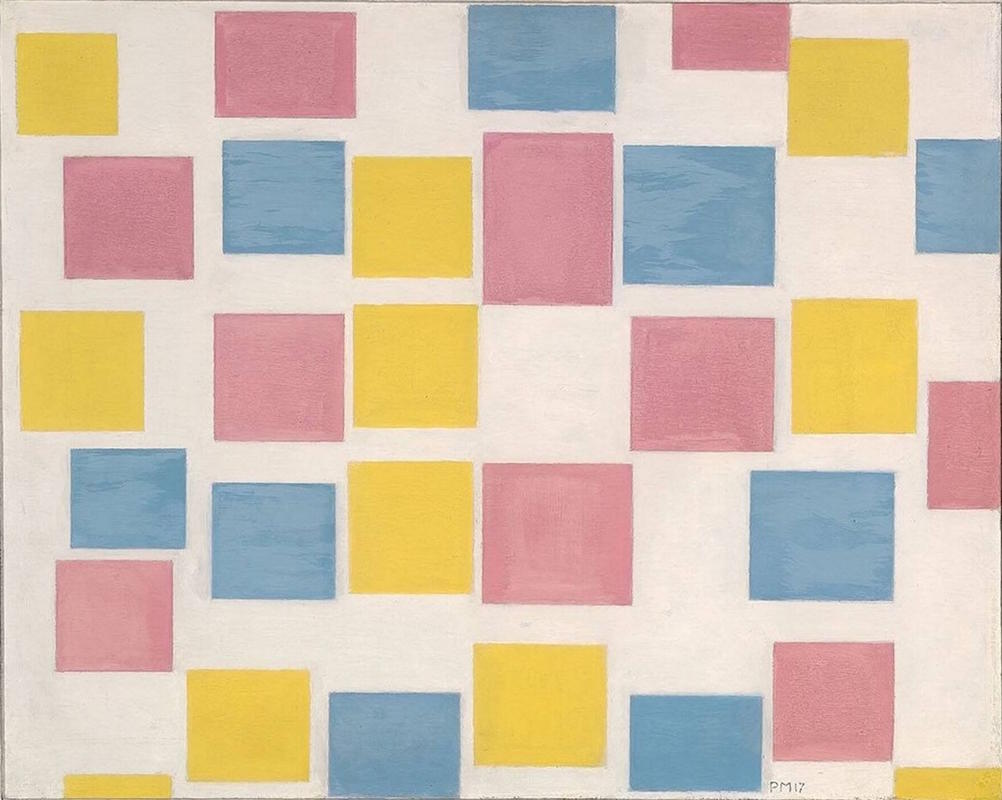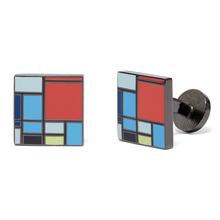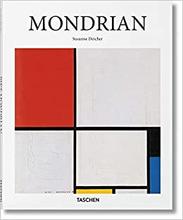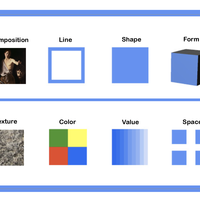More about Composition with Colour Fields
- All
- Info
- Shop

Contributor
Mondrian's Composition with colour fields, or Composition with colour planes II, is the second of four experimentations with flat, one-dimensional color arrangements from 1917.
They reside in the Geemeentemuseum Den Hag, the New York Museum of Modern Art (MoMA), and a private collection. "All works in this series show similar compositions, but they vary slightly in color and in the arrangement of the planes." The varying titles, formal similarity, and permutational quality of the paintings in the series have caused historians to mistake them for one another, but they are nonetheless an important milestone in the development of the work of the De Stijl art group, also founded in 1917, of whom Mondrian is the most prominent member.
Comparing the paintings with one another, as well as with the work of the other members of De Stijl, you can track the changes in Mondrian's process as he responded to the ideas and sensibilities of those in his circle. One of these ideas, proposed in essays by Mondrian, is to "purify the plastic means" of the artwork by drawing out its most abstract qualities, allowing the means itself to speak outside of a representational or naturalistic framework. The nature De Stijl sought was a symbolic and esoteric nature outside of the present laws of perception and evolution: a notion of the spiritual essences of colors, for example.
Mondrian used the writings of many scientists, philosophers, and spiritual leaders in his writings about art and his artworks. One particularly influential figure was the German chemist Wilhelm Ostwald, who gave Mondrian a new way to employ his interpretation of the color gray as he uses it in Composition with colour fields. In an essay in the De Stijl journal, Mondrian advances the Ostwaldian hypothesis that it is possible to mix black and white with the primary colors without changing their status as primary colors. The desaturated primary colors of Composition with colour fields, evoking an old, sun-bleached amusement park mural, result from Ostwald's principle that the best way to achieve harmony between colors was the modulation of value. You can view this idea throughout Mondrian's work from 1916 to 1920. Mondrian's work was bolstered by "Ostwald's promise that it was possible to quantify the psychological response to color, and thus to make it into a mathematical study," a perfectly appropriate idea for the advancements of the following century.
Sources
- Benton, Tim. The New Objectivity. New York: Open University Press: 1975.
- Gage, John. Color and Meaning: Art, Science, and Symbolism. Berkeley: University of California Press, 1999.
- Raven, Laura E., Madeleine Bisschoff, Margje Leeuwestein and others. "Delamination due to Zinc Soap Formation in an Oil Painting by Piet Mondrian (1872-1944)." In Metal Soaps in Art: Conservation and Research, edited by Francesca Casadio, et al., 343-358.














